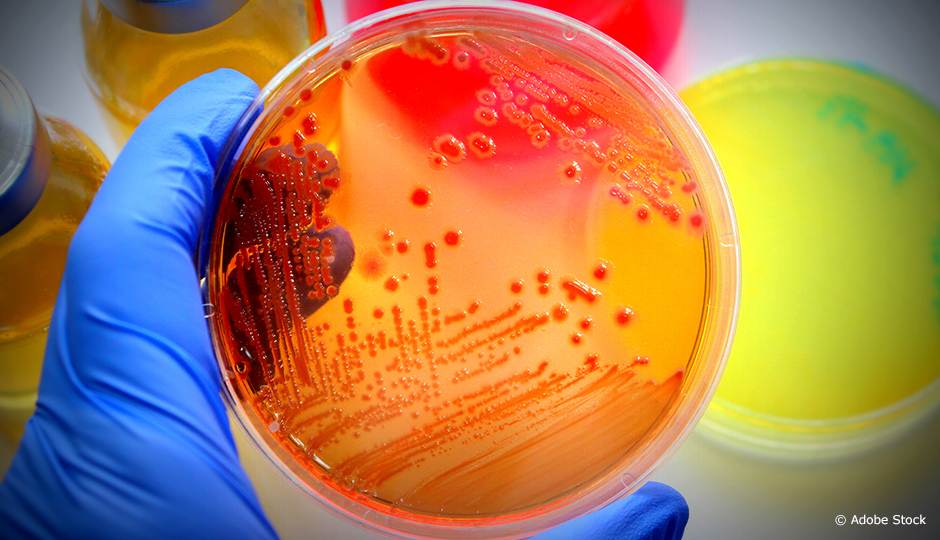Germs are very resourceful. To protect themselves when our immune system launches an attack—from disinfection to antibiotics—they rely on a tactic used by ancient walled cities. They secrete a biofilm that is mainly made up of polysaccharides, which are long sugar molecules, around their colony. Safe behind their sugary wall, the germs are free to colonize medical devices, prostheses and the human body as they please. The defence mechanism is responsible for 70 to 80% of hospital-acquired infections . . . but not for much longer!
The researchers have found a way to crack the protective biofilm from the inside.
Donald Sheppard, director of the division of infectious diseases at McGill University and researcher at the Research Institute of the McGill University Health Centre, and his colleague Lynne Howell, professor at the University of Toronto, have found a way to crack the protective biofilm from the inside. To build the wall, germs cut polysaccharide blocks using an enzyme that acts like a saw. But the experts have found a way to steal the saw and make some sneaky changes to it: by removing a safety catch, they were able to makes the tool work all the time. What does that mean? It means that the saw doesn’t build the biofilm anymore. Instead, it actually works to destroy it! The researchers used the technique to transform five enzymes secreted by different microorganisms and confirmed that their Trojan horse was effective in animal models infected with bacteria and fungus.
While it may take two to five years for the weapon to make its way to clinicians, Sheppard and Howell’s colleagues in Vancouver are already working on aerosol formulations that could be sprayed into the lungs of patients suffering from invasive pulmonary aspergillosis—an infection whose cure rate is only 50% because the fungus, which protects itself with a sugar armor, digests lung tissue. Dr. Sheppard also plans to use his saw, which is not toxic to the body, to destroy all the biofilms that could spread across artificial prostheses and medical equipment.




